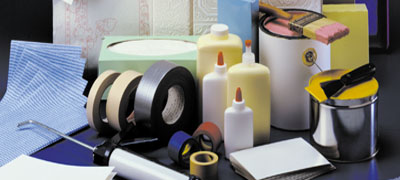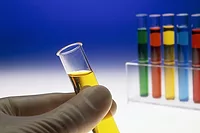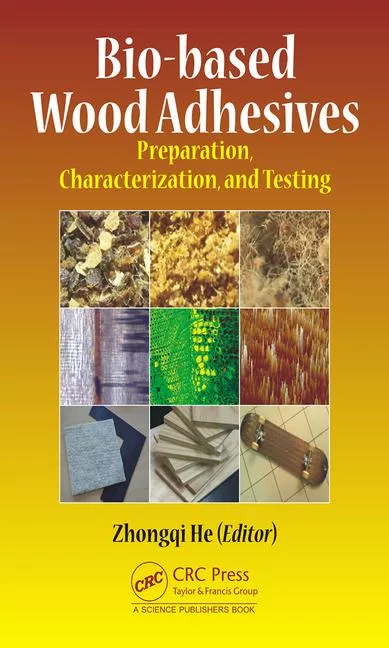Market for Emulsion Polymers to Rise 6.1%/Yr to $20 Billion+; Success Closely Linked to Water-Based Adhesives

The market for emulsion polymers is expanding in part due to their good environmental profile since, as water-based materials, their use results in lower emissions of volatile organic compounds during cure. Emulsions also offer low cost, easy handling and cleanup, good adhesion, flexibility, and abrasion resistance. These and other trends are presented in World Emulsion Polymers, a new study from The Freedonia Group, Inc., a Cleveland-based industrial market research firm.
Coatings applications, which encompass both paints and paper coatings, will offer the strongest gains as both major segments are forecast to see favorable opportunities. Demand for emulsions in paints and coatings is rising well in excess of paint-industry shipments as emulsions, particularly acrylics, find greater use in various industrial and special-purpose coatings, such as motor-vehicle finishes, general industrial coatings and traffic paints.
This growth will bolster an already significant position in architectural and decorative paints, where emulsions are favored due to their environmental and ease-of-use advantages compared to traditional oil-based paints. Acrylic emulsions will be the primary beneficiaries of these trends.
In paper coatings, emulsion demand will benefit from a continuing shift toward the use of higher-end paper with color graphics for advertising, direct-mail fliers, catalogs and glossy periodicals. These trends are primarily benefiting styrene-butadiene (SB) latex, which is the leading polymer used in paper-coating applications. Paper and board markets also will be stimulated by enhanced graphic capabilities for cartons and paperboard packaging used in retail markets.
Solid Demand From Adhesives Segments
Demand for emulsion polymers used in adhesives will offer favorable though below-average gains due to solid demand arising from paper and paper packaging, and tape and label end-use segments. Volume demand will continue to be dominated by low-cost polyvinyl acetate (PVA) adhesives used in high-speed packaging processes, particularly paperboard cartons. However, sluggish gains in carpet-backing applications, where SB latex predominates, will be a drag on the segment. Among the remaining markets for emulsion polymers, strongest gains are forecast for printing inks, and sealants and caulks.North America and Western Europe accounted for two-thirds of global demand for emulsion polymers in 2000. In addition to dominating output of key emulsion-containing products such as general-purpose adhesives, latex paints and coated paper, suppliers in these regions have made the greatest effort to improve the environmental compatibility of their offerings, including the greater use of water-based emulsions. Nonetheless, the most rapid gains in emulsion-polymer demand will arise in developing regions, particularly Asia, where adhesives and coatings suppliers are striving to improve the technological sophistication of their products.
The global market for emulsion polymers was valued at $14.9 billion in 2000, and the top four suppliers -- Rohm and Haas, Dow Chemical, BASF, and Air Products and Chemicals -- held 27 percent of the market. Dow Chemical is the market leader in SB latex while Rohm and Haas dominates in acrylic emulsions. BASF is a leading supplier of both SB latex and acrylics, and all four companies are back-integrated into basic feedstocks. Air Products and Chemicals focuses primarily on vinyl acetate emulsions. Other leading global emulsion-polymer suppliers include Reichhold (Dainippon Ink and Chemicals), Rhodia, PolymerLatex, OMNOVA Solutions, EniChem, Avecia, JSR and Noveon.
The U.S. Demand
An earlier study by the Freedonia Group, Emulsion Polymers, analyzes the emulsion-polymer industry in the United States. Emulsion-polymer demand in the United States is forecast to grow 3.1 percent yearly to 5.5 billion pounds in 2004 (Table 2). Market value is forecast to rise five percent per year to $4.8 billion, aided by shifts toward higher-priced emulsions, particularly acrylics. Good opportunities are anticipated for acrylic, vinyl acrylic and styrene-butadiene latex emulsions as they generally outperform their primary end-use industries such as paints, paper and paperboard, textiles, and tufted carpets and rugs. Emulsion-polymer demand will benefit in these applications from their good environmental profile, particularly in the area of volatile organic compound emissions.Acrylic emulsions will exhibit the best growth prospects, expanding nearly four percent annually to 1.5 billion pounds in 2004. Acrylics will benefit from their compatibility with waterborne products in applications such as adhesives, coatings, and paper and textile finishes. They are already widely used in the production of architectural paints, where product reformulation has nearly reached saturation levels. Consequently, opportunities will be centered in industrial and specialty coatings where reformulation has lagged due to higher performance requirements. Demand for vinyl acrylics will benefit from cost advantages over acrylic emulsions in paint applications and growing use in packaging adhesives, nonwovens and paper coatings.
Styrene-butadiene latex demand will expand 2.6 percent annually in the United States to 1.7 billion pounds in 2004 based on opportunities in paper and board and specialty applications. Paper and board growth will result from greater demand for high-quality printing and writing papers such as label stock and glossy, commercial printing grades, as well as paperboard packaging.
However, faster advances are expected in specialty applications such as roofing felts, sheathing, paper saturation (e.g., abrasive papers), and asphalt modification. The styrene-butadiene latex business is becoming more research intensive as manufacturers seek to improve profit margins via process improvements, without major price increases. Producers are therefore focusing on refining existing grades to enhance performance, while developing new product applications.
Paint and paper- and board-coating markets will continue to account for one-half of total emulsion-polymer demand. Opportunities in industrial-paint uses will result from the replacement of traditional solventborne interior trim, and industrial and high-gloss exterior paints. Paper- and board-coating markets will be stimulated by needs for high-quality glossy and other papers, as well as enhanced graphic capabilities for cartons and other board products used to package beverages and food products. Other areas of opportunity include packaging adhesives, construction adhesives and printing inks.
Industry Consolidates, Is Commodity-Driven
The emulsion-polymer industry is consolidating and commodity-driven in light of slower-growing end uses and price sensitivity. Producers have responded by increasing production efficiency and expanding globally via mergers and acquisitions.The top six companies -- Rohm and Haas, Dow Chemical, Air Products and Chemicals, Reichhold (Dainippon Ink and Chemicals), OMNOVA Solutions and BASF -- accounted for nearly one-half of U.S. emulsion-polymer sales in 1999. Rohm and Haas is vertically integrated and the leading producer of acrylic acid and acrylic emulsions. Dow Chemical is the market leader in styrene-butadiene latex as well as a leading supplier of butadiene feedstocks. Dow Chemical is also the leading supplier of emulsion polymers to the paper-coating industry. Emulsion-polymer companies are strengthening their strategic position in this fairly mature, highly competitive industry by tailoring new products to specific niche applications and broadening the range of synthetic polymers offered.
For more information on purchasing the studies World Emulsion Polymers and Emulsion Polymers, contact The Freedonia Group, Inc., 767 Beta Drive, Cleveland, OH 44143-2326; call Corinne Gangloff at 440-684-9600; fax 440-646-0484; e-mail pr@freedoniagroup.com; visit www.freedoniagroup.com; or Circle No. 73.
Links
Looking for a reprint of this article?
From high-res PDFs to custom plaques, order your copy today!






